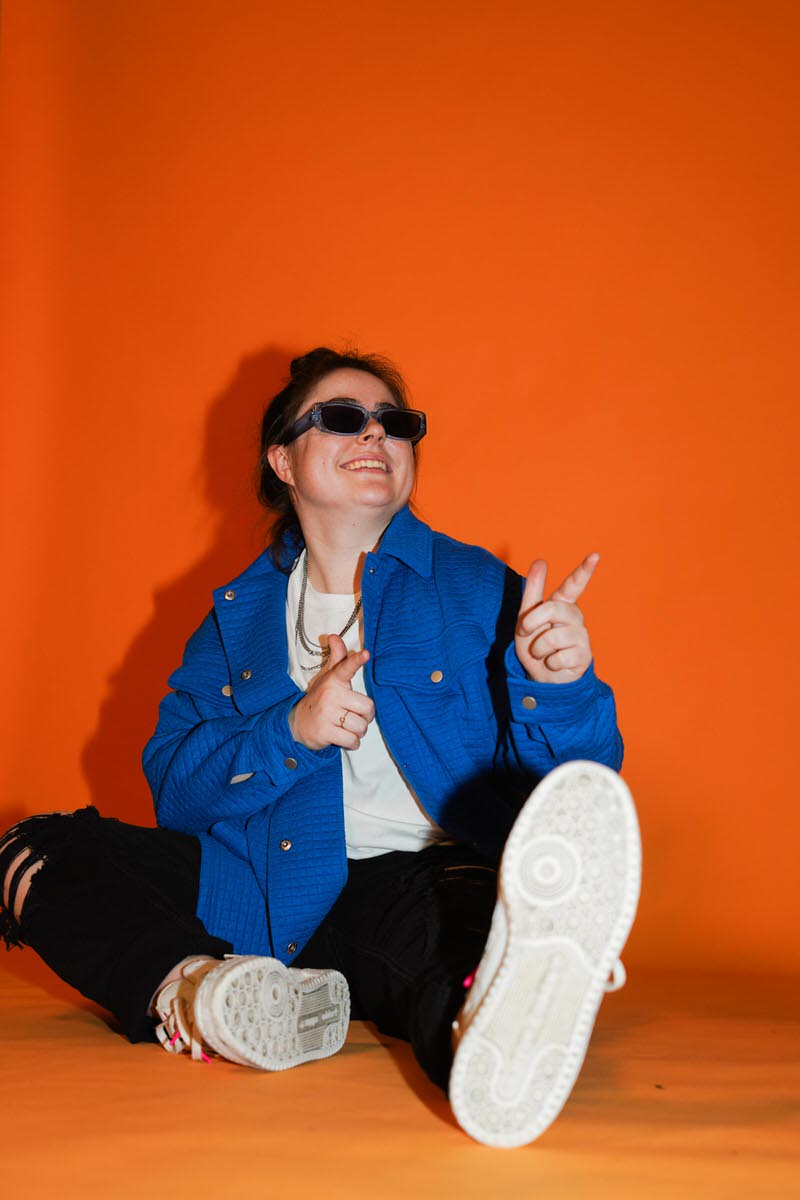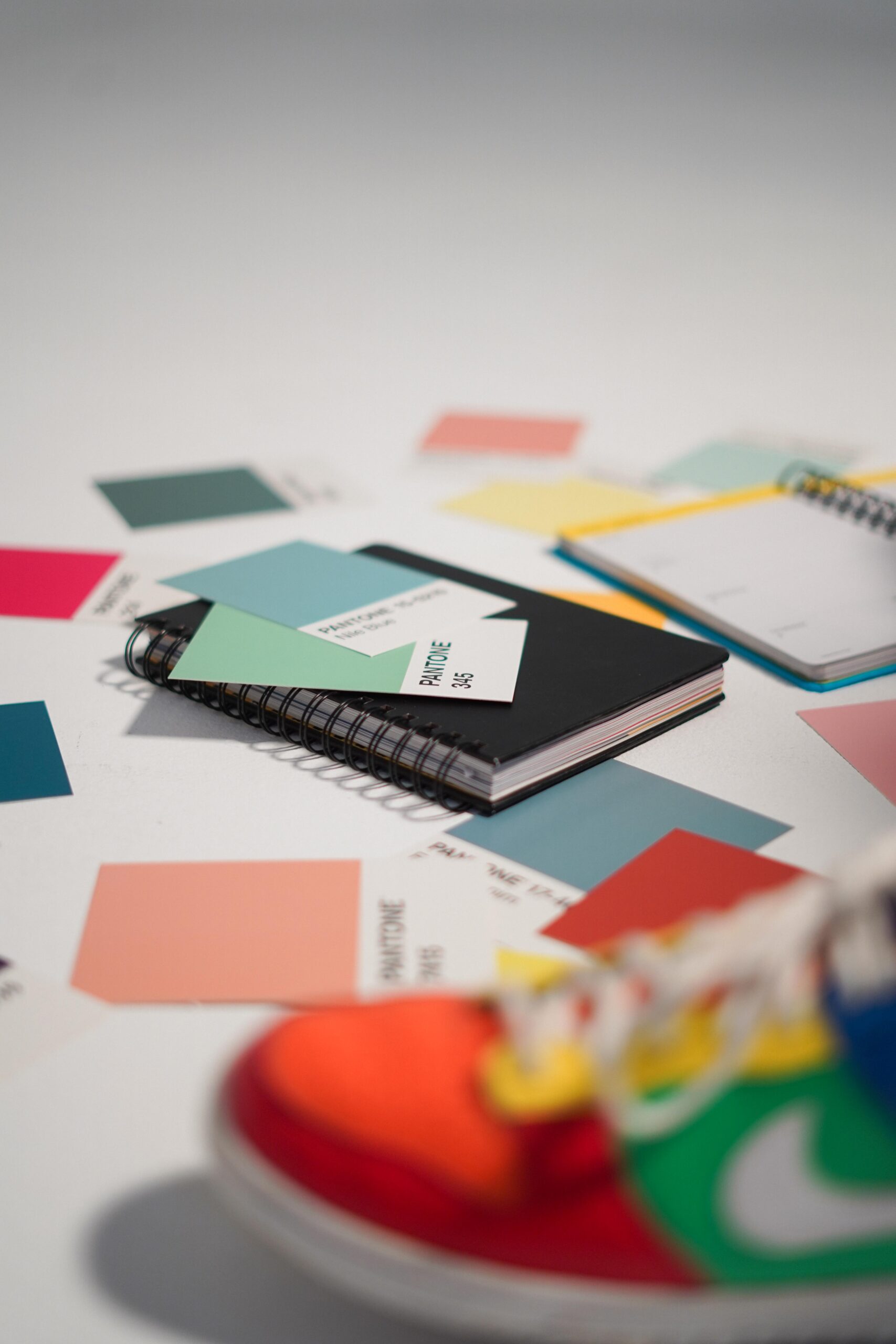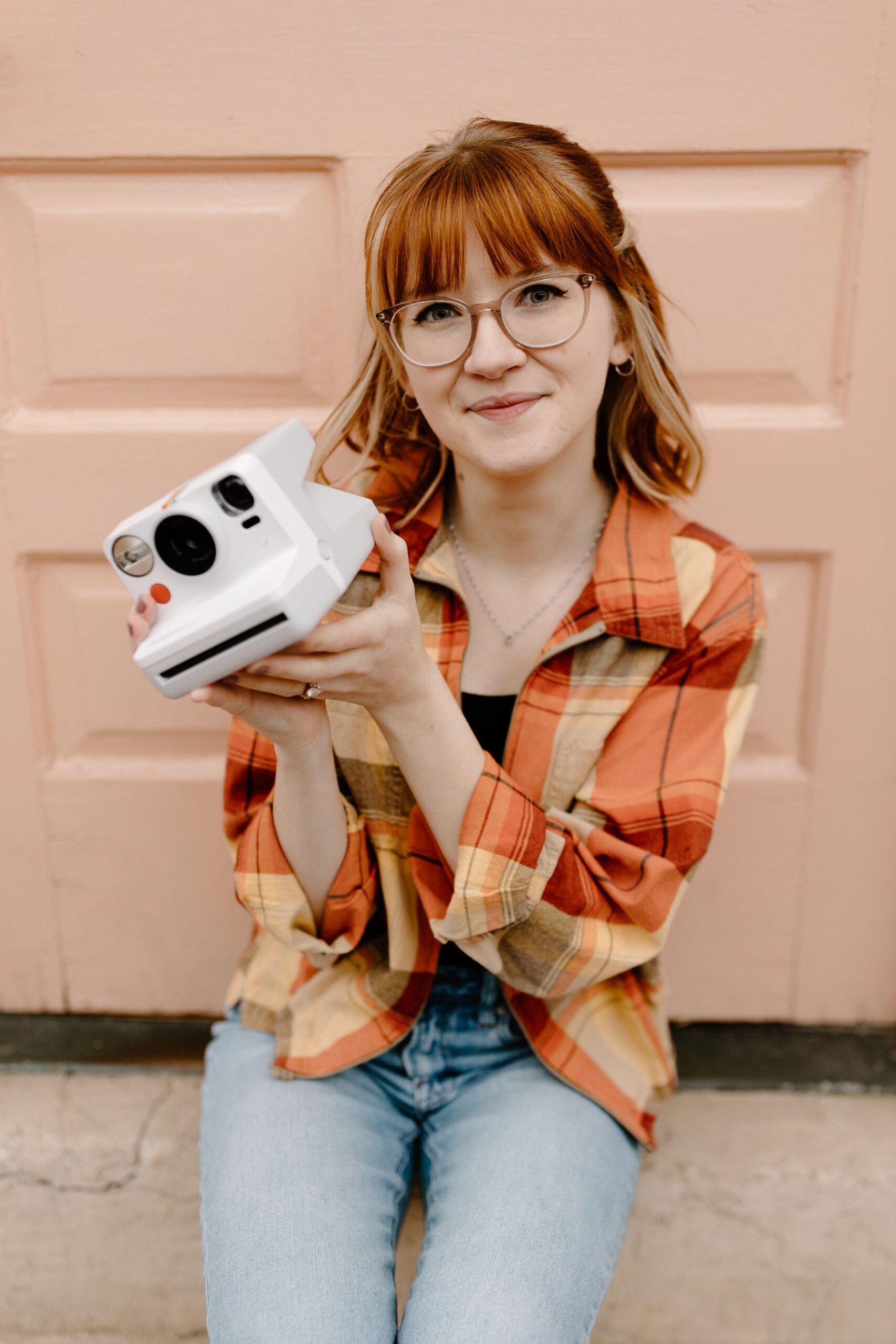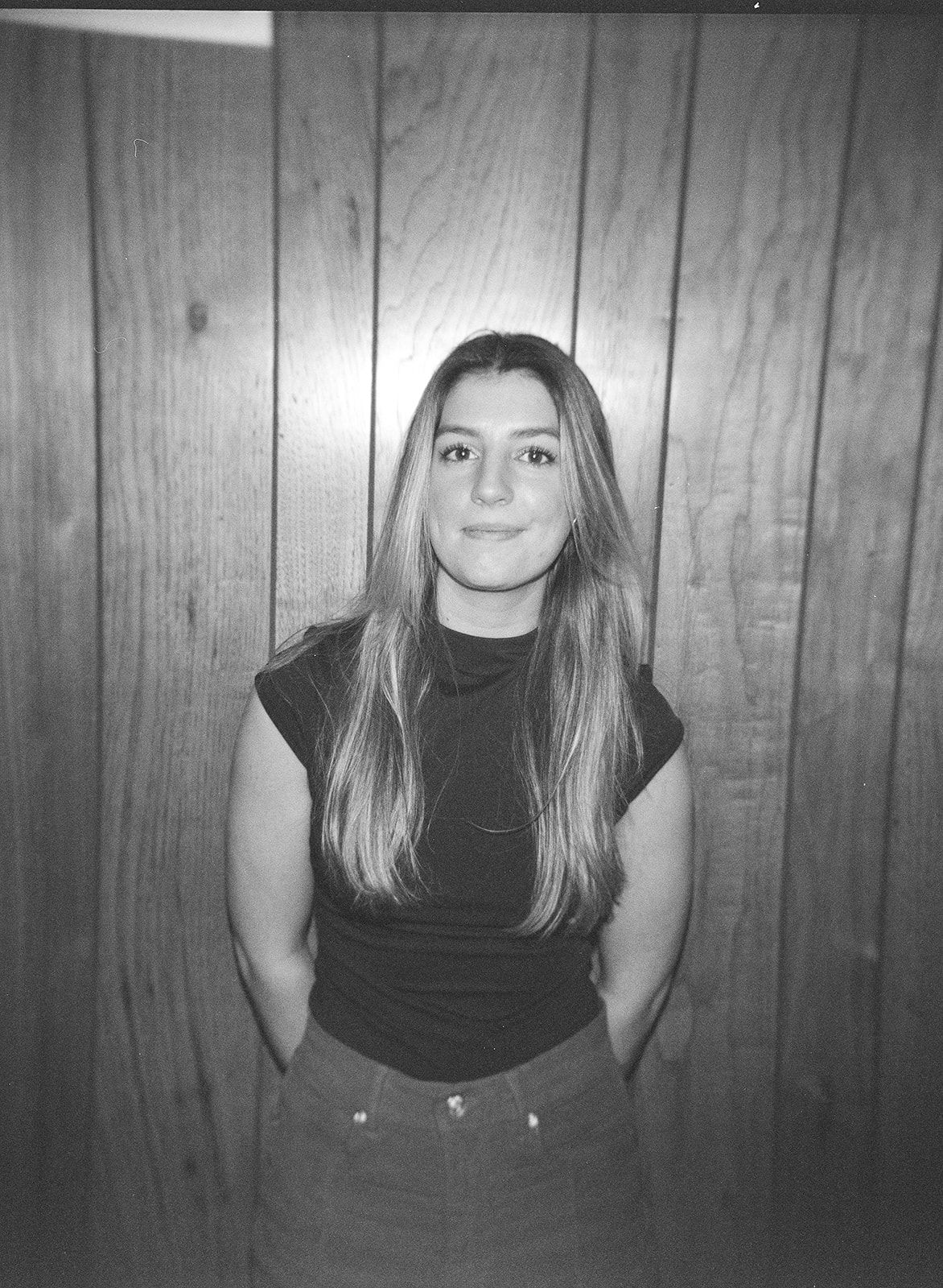Psst – This article was written in 2022, so our web design process may have changed.
I’m so excited that you’re tuning in today. So today’s episode is all about our web design process at Inkpock Creative.
This is one of the most asked questions we get just from other designers and also other entrepreneurs who are interested in working with us, or they’re just looking around to try to find a designer that’s going to work best with their schedule. So I’m actually very excited for this episode!
We take so much pride in our process, and it’s something that we’ve really honed in on over the years, and especially now that I have Jesse working with me, it’s just kind of made the process even smoother, which makes me so excited because I try to make the process as easy as possible for my clients.
So let’s go ahead and dive right in right from the very beginning of our web design process.
This post may contain affiliate links, which means I’ll receive a commission if you purchase through my links, at no extra cost to you.
Step 1: Fill out an inquiry form.
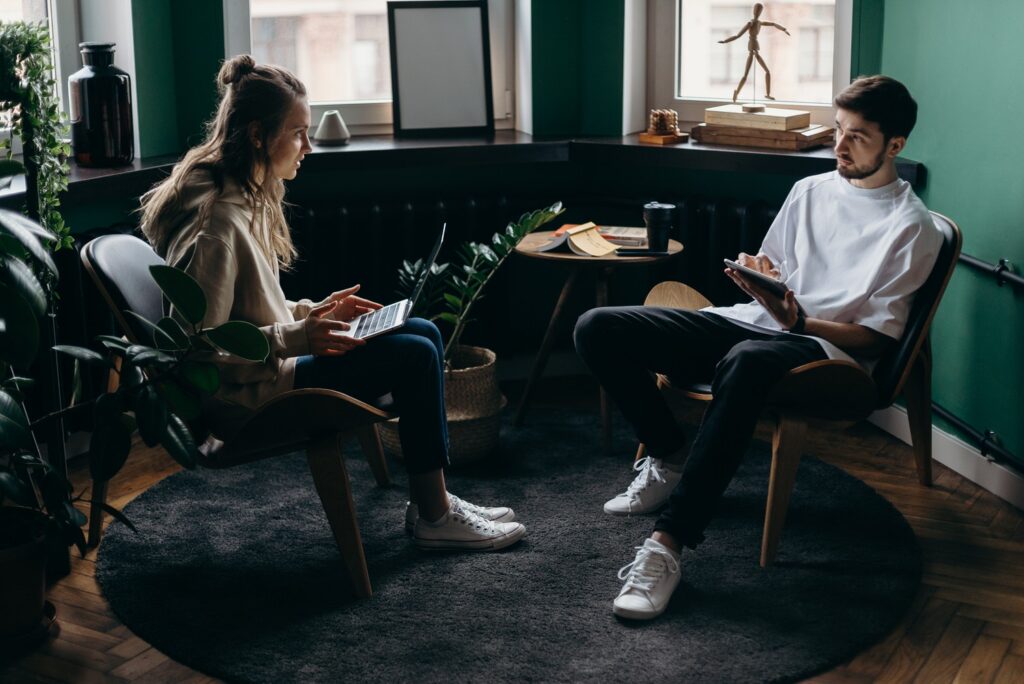
So our web design process actually starts the second somebody fills out an inquiry form on our website. So we use Honeybook for our inquiry form, which is our CRM. So that makes it really easy because the second someone inquires, I actually have it set up, so they get an automatic email right back that says, hey, thanks so much for reaching out and inquiring. If you have anything else that you needed to include, just hit reply and let us know, and then we get back to them within 48 business hours.
So on that inquiry form, something I’ve recently started implementing that I found to be really helpful, is actually have a question directly on there, just like a little drop-down that says, would you like to have a discovery call?
Because I know that, you know, some people, they would rather have a call, chat through everything, kind of make sure all of their questions are answered. There are other people who would already know that they really want to work with us, and maybe they’re just like, no, I don’t even need a discovery call. I’m already sold.
And I put that in there because I know when I’m reaching out to people to work with them for some reason, I’m the kind of person that when I’m on the client end, I usually know right off the bat if I want to work with somebody or not. So I usually don’t like to have discovery calls, especially if I’m ready to book, I’m just like, take my money, send me the contract.
So that’s something I recently started implementing, and it’s been really nice because it really already makes the client kind of feel heard from the second that they inquire. I want to make it tailored to each client to make the web design process kind of feel the most comfortable for them because some people might not necessarily feel comfortable having a discovery call. Maybe they’re more introverted.
While someone else would rather just hop on a call and ask all questions. And I’m happy to do whatever is easiest for them after that!
Step 2: Have a discovery call and/or send the proposal.

Depending on which option they choose, we would have a discovery call where we would get all their questions answered. We tell them a little more about the web design process and kind of put them at ease before we then send over a proposal.
So if somebody chose not to have a discovery call, we would just go ahead and send the proposal over. If they didn’t sign up for a discovery call, we do include a link to book a discovery call if they decide they do want one after they see the proposal.
And our proposal really lays down everything. So we actually use Honeybook‘s proposals now. I used to send a PDF, but it got really hard always to be updating it, and I actually changed it because Honeybook, I have their new Smart files, which are incredible, actually.
If you want to try out Honeybook, I have an affiliate link. I’ll put it in the description, but I’m pretty sure it gets you a really great discount if you start using Honeybook. I’ll put that down below in the show notes, but we send our proposals via Honeybook.
And I do this because it’s super interactive. So I would always have things that I’d have to have someone let me know if they wanted to move forward, like what their date is, what payment plan they wanted, if they wanted to go custom, or they wanted to do our VIP day.
So now I literally just put it all directly in that proposal. And there are required checkboxes that people have to kind of pick and choose as they go, and it makes it so seamless.
And then the second someone hits submit, I automatically just get an email that says they have made their choices.
Step 3: Send over the contract and invoice.

And then, from there, we go ahead and send over our contract and invoice. So again, we send those via Honey book. I send them together so that the invoice is connected to the contract. So it’s just all in one file.
It’s just because we actually require the first invoice payment to be made when the contract is signed in order to book a spot on our calendar.
Step 4: Onboard the client using Notion.

And then after that is completed, we onboard them in Notion. So at Inkpot, we are absolutely obsessed with Notion. We use it for our project portals. We use it for social media management, like managing our own social media calendars. We use it for blog posts.
We’re actually using it for this podcast. I’m literally reading notes from Notion right now to record this podcast.
So we’re on Notion all the time, and we actually another shameless plug. But we have a Standout with Notion course where you can learn how to manage your own business through Notion as well. So I’m going to put the link for that down below too.
But we then create an entire client dashboard for them on Notion. And we have this all templated. So it’s really easy. Jessie just hops in, creates a new template dashboard, she goes in and edits it to make sure that it’s more custom-tailored to that client.
And we do not do that until the contract and invoice are all set. Once that is all set, either Jessie or I will film a quick video, walking the client through the Notion board in case they’ve never used it before.
That is something that I highly recommend all service providers add to their process is filming a custom onboarding video. I just think it’s such a nice touch and really kind of makes the client feel taken care of, especially if they’re booking very far in advance.
Our notion board actually includes everything from that custom loom video I just mentioned to a breakdown of all of their tasks. So we break down the client tasks based on the project phase. We have phase one, which is prep work, phase two, which is project week, and then we have phase three which is off-boarding.
So we just have that kind of all set up in there so that they can see everything from the get-go. We go through and assign dates ahead of time so that they can market on their calendar. And we also have a breakdown of the web design process so that they can see everything that’s happening kind of written out as well.
We have links to contact us, we have a link to their contract invoice in case they ever have to see it again. And then we also have a link or a spot that kind of lists out everything that’s included in their project, and we make it too so that a client can add on to it at any time if they want to.
Then basically leading up to the project, we reach out to them a few times to kind of send reminders.
Step 5: Send a fun client gift!
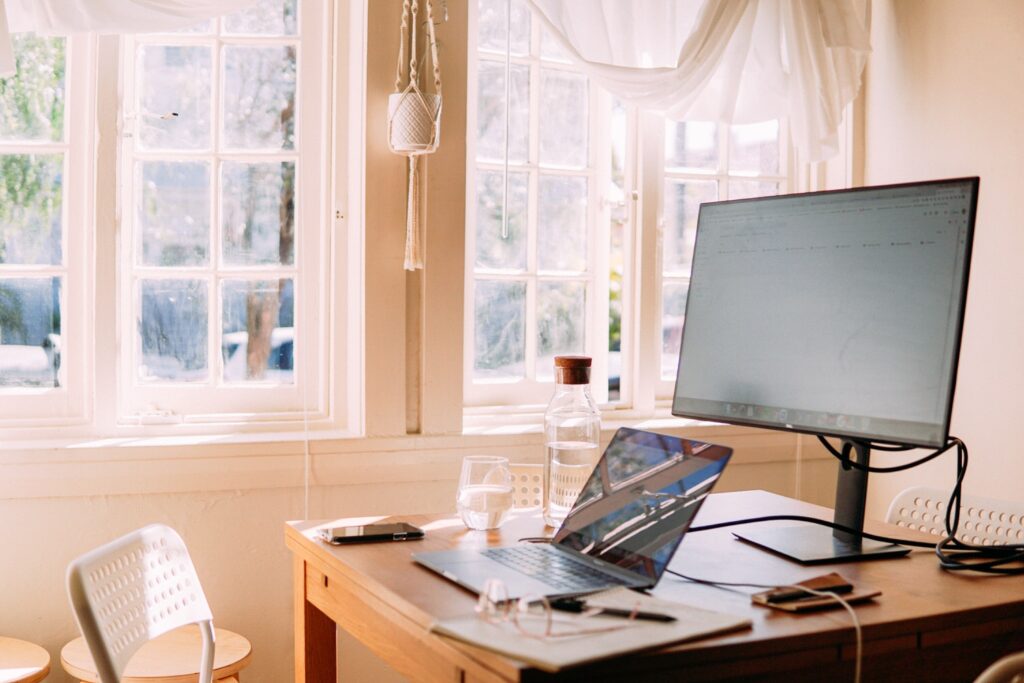
Right after setting the notion board, we actually also go ahead and send our client a gift. So we kind of rotate between gifts. We were doing fun bucket hats that said Love Wins for a while. We were doing really cool ball caps for a while, too. That’s kind of what we did all spring and through summer.
And now we are actually shifting to start doing homemade gifts just because I have a soft spot for homemade gifts, but we send them in these really cool rainbow boxes, and it’s filled with colorful tissue paper.
Sometimes we also throw in little key chains or notebooks or stickers or anything else that we have kind of in our gift box collection at the time just because we’re always changing it up just to kind of keep it interesting.
So we do always send a gift even if it’s a one-day site. So we do gifts for one-day websites and custom websites, and we always do that. I know there’s always talk about if you should do them before the project starts or after.
Personally, we book out far enough in advance that we always do them before just to get our clients really excited for when the project officially starts. And then, of course, we just join in on the celebration too at the end, like when they launched their website, and then the project officially starts.
Step 6: Have the vision call.

We actually do have a project call kind of the week before. We call it our Vision call. We had played around with calling it a strategy call. But that makes it sound way too serious. And we kind of just like to have fun on the call and just chat about the overall vision for the call that the client has to kind of make sure that they feel very heard. With this call, we can take into account what they want while also kind of combining it with the strategy that we see is going to work best for their project.
So we have our vision call the week before, and this call is usually about 20 to 40 minutes. It kind of depends on the client. We’ve had some of the calls that are like 15 to 20 minutes, and it’s just because we get through them really fast and we just feel super clear on what we have to do and what we have to get it done.
While other ones we might have some more questions.
Step 7: Send over the website strategy document.

And after that call, if it’s a custom website, we actually send over a complete strategy document that breaks down everything about their website before we start designing.
This is something we actually just started implementing in a few projects just to kind of test out how it goes. And it’s something we are going to be doing moving forward with all of our projects, just because we feel like it really helps to kind of see everything that we talked about written out.
So that strategy document breaks down inspiration, it breaks down their goals, the site map, everything like that. We are probably also going to implement a smaller version of that as well with our one-day websites too because the call ahead of a one-day website also helps.
Step 8: Start on the project!

Then it is officially time for the project. So if it is a custom website, we actually have a two-week turnaround, and we do that because the way that my brain works, I work best when I have fewer projects so that I can focus a lot more and I’m not jumping between things.
And I also find that a lot of my clients tend to be photographers, coaches, and other creatives, who really would only have a limited time to pay attention to the project too. We really just want to kind of make sure too that they have a designated launch date ahead of time.
So overall, it just really helps all of us focus and just kind of put our heads down work and get the best work done that we can because we’re not jumping around between tasks so often.
So the first week of our custom web design process is dedicated to mocking up and wireframing the site. This basically means that I am creating from scratch static versions of the site. So it’s almost like an image of the site that I then sent to the client for review too.
So we do the home page on Monday, and then we send that for review. And then I design the full site Tuesday. Yes, the entire full site. And then I send the entire full site again on Thursday with their revisions accounted for.
So throughout that, the client is like looking at over two and providing feedback on everything.
And then the second week is when we are developing the site. So Jessie is our resident developer, so she sits, and she’ll develop the whole site. She tests everything. We look everything over together.
That’s when we prepare all of our offboarding guides as well.
The site is officially sent to the client on Friday and then the next three business days of the following week, Monday through Wednesday, they have our launch support in case anything comes up. And we also send them a fun Launch Success Guide, as well as some launch graphics that they can share on social media that showcase that they got their new site design just to kind of amp up everybody.
At the end of the offboarding, after the support ends, we do also send them a feedback form through Honeybook that just kind of asks them specific questions about how the web design process went and what they wish could have been done differently if there was anything.
Because we are always upping our experience, we take into account every single project just to really make sure that the clients feel taken care of. And if there’s a hole in anything, we immediately fix it. We do not put a bandaid on it.
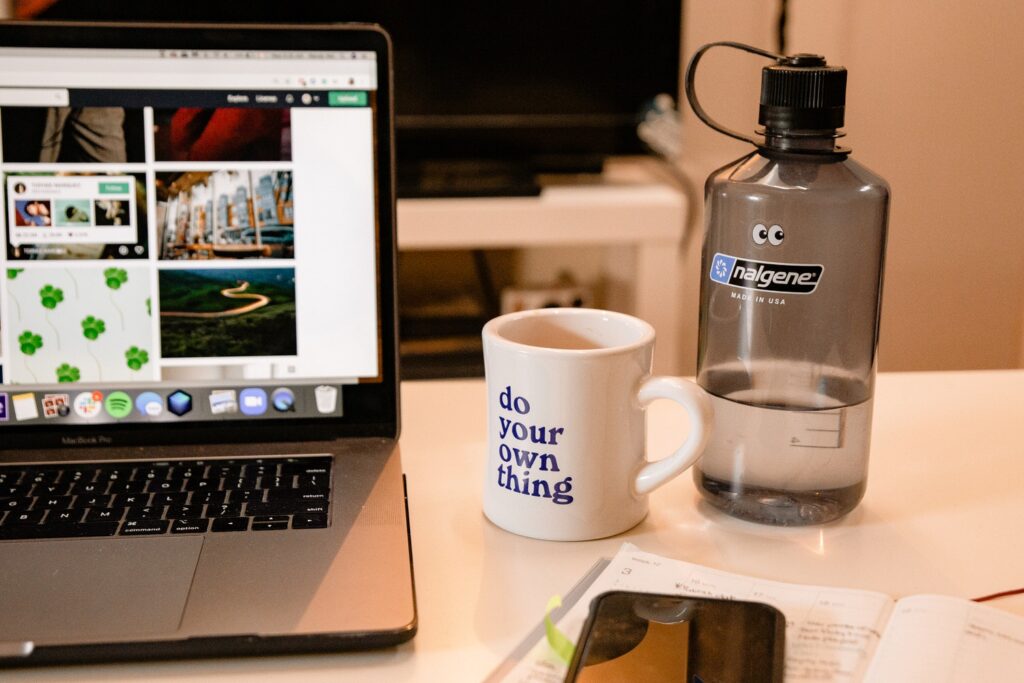
We go right ahead, and we fix it. Jessie and I are meeting about how to kind of redo little tiny pieces of our process all the time. That’s something we take really seriously at Inkpot Creative.
So that’s kind of the full look at what happens with our two-week web design process.
If they booked a one day website, it’s a little bit different. So we still have that vision call the week before and then all of our one day websites actually take place on Wednesdays. And we did this strategically because Wednesday is the one day we’re actually not doing anything for a custom website design.
We give clients all day on Wednesday if there’s a custom website design project to look over the full mock-up of their site so that they have a full day and don’t feel like they have to rush time to give feedback to us.
So Wednesdays are VIP days and that Monday before the project starts is when we actually design the homepage. So even though it is a VIP day, we do still do some work beforehand just to make sure that the actual day doesn’t feel crazy hectic.
So that Monday we go ahead, and design their homepage. This is a little bit different because with one day websites we do not do a mock-up. We go right ahead in their account, they pick a template from our shop, and then we customize that template to best represent their business.
And you’d be kind of surprised if you looked at some of the past sites that we’ve done because most people actually all pick the same template and you wouldn’t be able to tell because the sites look so different. So we really use this just as a base.
We design the home page, and we send that to them for review. They get a day to review it before we start their site design on Wednesday. The way the one day site works is because it is an expedited turnaround and because it is semi-custom, they actually only get feedback on the homepage.
That’s all we have time to implement, and then we design the full site Wednesday, send it over, and then they are offboarded with a whole bunch of tutorials as well as access to our template customization course that anyone who purchases a template gets.

And they can also join our template group on Facebook so if they have any more questions they are very taken care of if they have to make any more edits.
So with that one, as I said, we design the full site on Wednesday directly and show it, and then they get it at the end of the day, and then they have our support Thursday and Friday when we offboard them. Wednesday again they get sort of the same sort of stuff you get with a custom site so they’ll get some launch graphics.
We’ll also let them know that they have 48 hours of support in case anything comes up. And then that Friday, after their support is done, we send over a feedback form requesting their feedback on how the day went for them.
And that is all for our web design process at Inkpot Creative. I know it was a lot! Thanks so much for tuning in.
Keep the party going:
- Therapist Web Design for a Changemaking Art Therapist
- 13 Wedding Photography Websites That Will WOW You!
- 16 Easy Web Design Mistakes to Avoid
- The Importance of Boundaries in Business
- How to Attract Ideal Clients Through Blogging - July 24, 2024
- How to Use Local SEO for Photographers through Educational Blog Content - July 17, 2024
- How to Repurpose Blog Content for Social Media: Case Study with Tiffany Lantz - July 15, 2024
8/15/22
Published On:
Krystianna Pietrzak
